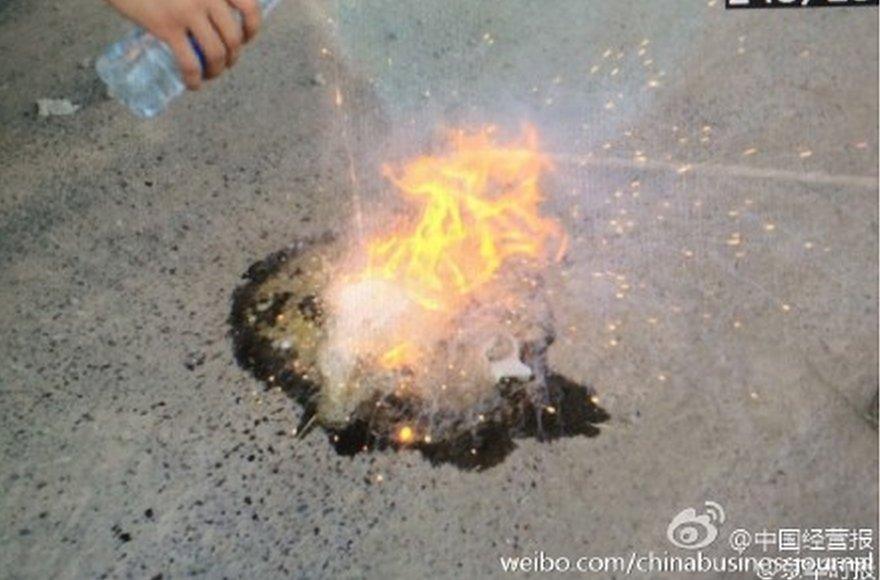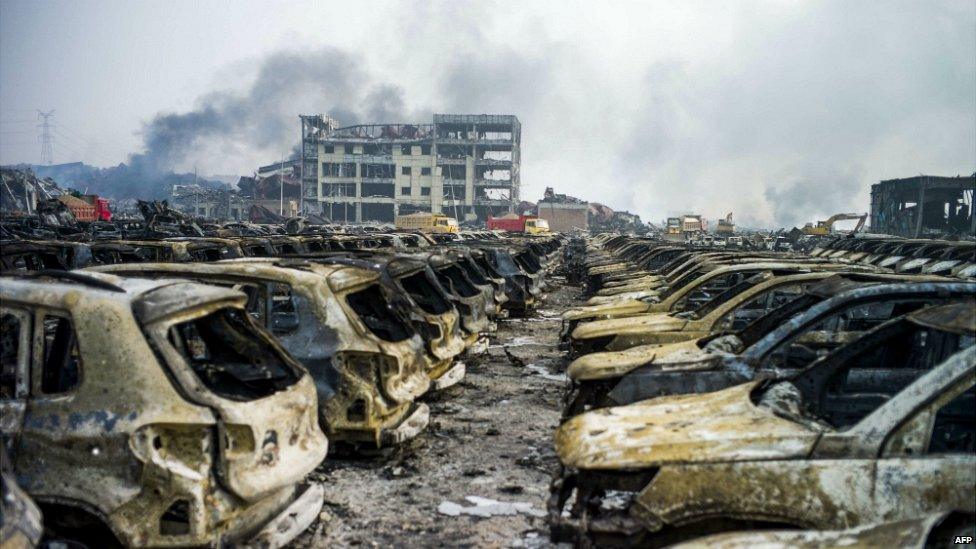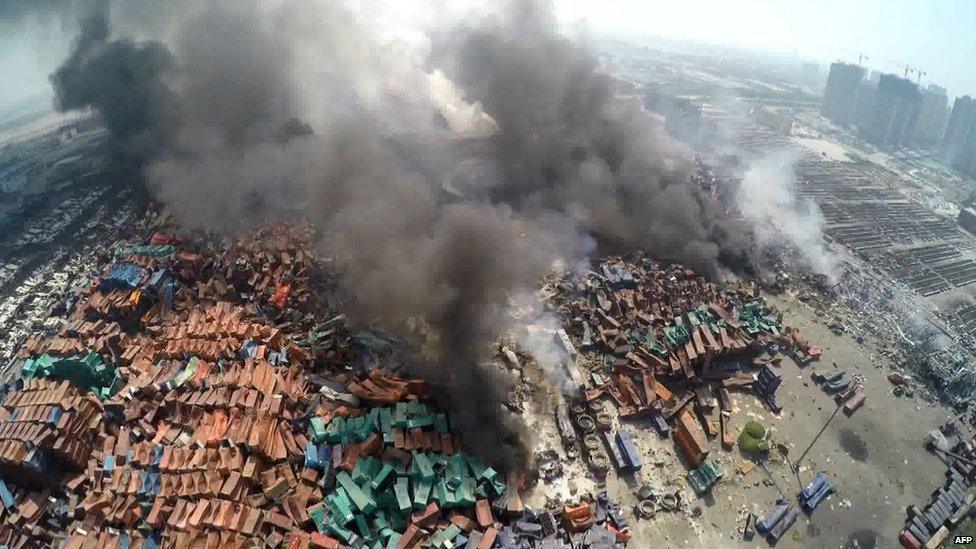China explosions: Potent chemical mix behind Tianjin blasts
- Published
An eyewitness captures the fear of those watching the explosions
Chinese authorities are still trying to ascertain what exactly caused a potent mix of chemicals to ignite in a warehouse in Tianjin late Wednesday, triggering blasts that rocked the city.
The explosions took place at a warehouse owned by Ruihai International Logistics located in Tianjin's port area.
What were the chemicals involved?
Authorities had earlier said that the warehouse contained calcium carbide, potassium nitrate and ammonium nitrate.
Calcium carbide is used in the production of PVC plastic, while the other two chemicals are used in producing fertiliser and dynamite.
There were unconfirmed reports that the warehouse contained 700 tonnes of sodium cyanide, stored in wooden boxes or iron barrels. The chemical is used in the mining industry, among other uses. Police on Saturday confirmed the presence of an unspecified quantity of it near the site.
People's Daily, external quoted firefighting officials as saying that some of these chemicals would be "easy to explode if heated or collided".
China is the world's largest consumer of hazardous chemicals, says Paul Pang, vice-president of industry analysis firm IHS Chemical in China.

One image on Weibo appeared to show a chemical burning when water touched it
Can they pose a danger to people's health?
In sodium cyanide's case - yes, very much so. US government health experts say it can be "rapidly fatal" if inhaled or ingested, external. It is soluble in water - raising concerns in some Chinese media that it may have entered drain water - but its dust is also easy to inhale.
It releases the highly poisonous gas hydrogen cyanide when dissolved or burned.
Potassium nitrate can cause breathing problems and damage to kidneys, while ammonium nitrate can be toxic when burned.
Calcium carbide can be harmful if touched or breathed, and doctors recommend immediately washing affected areas.
One image widely circulated on the Chinese micro-blogging site Weibo, said to be from the disaster site, external, appeared to show a chemical burning when water was poured on it.
"With such a large fire, inevitably the plume of toxic fumes that have been dispersed could have devastating effects to the public in the future," says Shane O'Carroll, a chemical safety specialist with Chemstore, a British hazardous materials company.
Mr O'Carroll says sodium cyanide running off into groundwater systems could pose a public health risk, and he said people in Tianjin should consider drinking only bottled water.

Rows upon rows of new vehicles were destroyed by the explosions
How do you store and handle them?
There are standard global safety regulations for producing, transporting and storing hazardous chemicals, but these are extremely numerous and depend on the type of chemical and its toxicity.
China adheres to these rules, but, Mr Pang, of IHS Chemical, says: "The reality is that sometimes these regulations may not be strictly followed, and in some cases, the people working in this industry are not fully trained and qualified for handling hazardous materials."
Chinese law states that businesses dealing in dangerous chemicals must store such materials at least 1km from public buildings and transport networks. But three major residential communities were located within a 1km radius of the Ruihai warehouse, said Global Times., external
Other media outlets also reported that a goods loader working for Ruihai claimed he had not been given relevant training.
Some products, such as sodium cyanide, are extremely toxic and highly regulated, and also not easy to contain in event of a spillage.
Mr Pang says: "It is uncommon to have 700 tonnes of sodium cyanide stored in one location."
Mr O'Carroll says all the chemicals should have been stored as far away as possible from each other. "It is evident each should have been segregated as it was inevitable that there would be a disastrous explosion with that combination."

The initial fire was reported to have started in a container at the port
What happens if there's a disaster?
Questions have been raised online over whether firefighters, who reportedly sprayed water on the initial fire before the blasts, followed the right protocol.
Calcium carbide, when mixed with water, produces acetylene gas, which is flammable.
Chemical safety expert David Leggett told Reuters that the acetylene explosion could have detonated the ammonium nitrate.
Mr Pang says that, going by the magnitude of the blasts, the explosions were caused by chemicals such as potassium nitrate igniting.
Industrial safety manuals online state that a calcium carbide fire should be put out using dry powder fire extinguishers, external, and cleaned up by mixing sand into the chemical.
In the case of a release of sodium cyanide, for example, the United Nations recommends neutralising it with sodium hydroxide, external.
Potassium nitrate should be picked up using equipment, external, say experts.